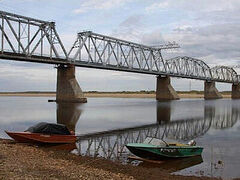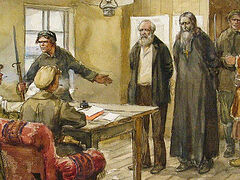 Photo: pravoslavie.ru St. Andronik, in the world, Vladimir Nikolsky, was born in 1870. After completing his studies at the Moscow Theological Academy in 1893, he embraced monasticism. In 1895, he was ordained a priest and, two years later, sent on a mission to Japan. There, he demonstrated apostolic zeal in spreading the Christian faith, and in 1906 he was consecrated as Bishop of Kyoto. However, two years later, illness forced Bishop Andronik to return to Russia.
Photo: pravoslavie.ru St. Andronik, in the world, Vladimir Nikolsky, was born in 1870. After completing his studies at the Moscow Theological Academy in 1893, he embraced monasticism. In 1895, he was ordained a priest and, two years later, sent on a mission to Japan. There, he demonstrated apostolic zeal in spreading the Christian faith, and in 1906 he was consecrated as Bishop of Kyoto. However, two years later, illness forced Bishop Andronik to return to Russia.
Initially, he was appointed as a vicar in the Novgorod diocese, later transferred to Omsk, and eventually became the Archbishop of Perm. A tireless preacher of the Word of God, he organized rural parishes, provided aid to the poor and destitute, and made significant efforts to bring the Old Believers back into the fold of the Holy Church.
Immediately after the October Revolution of 1917, the Bolsheviks enacted a law separating the state from the Church and began persecuting believers. When a church message protesting against these measures was read at the Perm Cathedral, Archbishop Andronik instructed the archdeacon to pronounce an anathema on the persecutors. On June 4, 1918, the saint was promptly arrested along with the vicar bishop Theophan and subjected to a brutal interrogation, during which he did not utter a single word. To dispose of the hierarch, the Bolsheviks led him into a forest and ordered him to dig his own grave. After completing the task, the archbishop prayed to the Lord and lay down in the freshly dug pit. His tormentors immediately began burying him alive. After covering him halfway, they shot him and then buried him completely.
Bishop Theophan was drowned in the Kama River.
Upon learning of these events, the Synod decided to send a special commission to Perm to investigate the matter. The Bolsheviks stopped the train carrying the commission and killed all its members. When the local peasants, who had buried the bodies of the new martyrs, began to venerate them as saints, the authorities sent people to exhume and burn the bodies of the slain.
This tragic series of events underscores the intense persecution faced by the Church and the steadfast faith and sacrifice of its leaders during that tumultuous period.



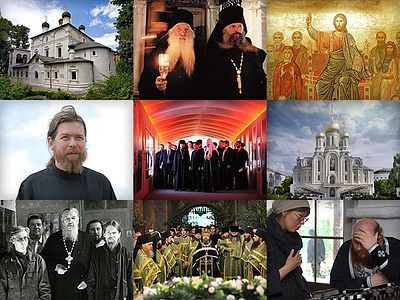

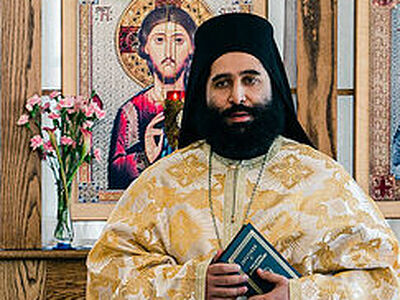
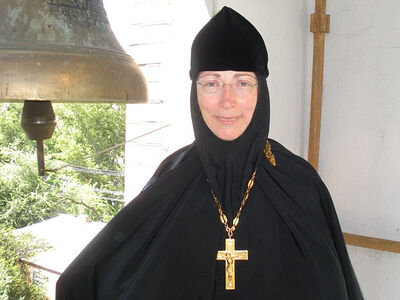



 On a Visit to Orthodox JapanThere are more than forty active Orthodox churches, and their parishioners aren’t simply Slavs who have moved to Japan, as you might first think. The parishioners of the country’s main Orthodox church—the Cathedral of the Resurrection of Christ in Tokyo—are mainly Japanese. St. Nicholas of Japan was the first to bring Orthodoxy to the Japanese land.
On a Visit to Orthodox JapanThere are more than forty active Orthodox churches, and their parishioners aren’t simply Slavs who have moved to Japan, as you might first think. The parishioners of the country’s main Orthodox church—the Cathedral of the Resurrection of Christ in Tokyo—are mainly Japanese. St. Nicholas of Japan was the first to bring Orthodoxy to the Japanese land.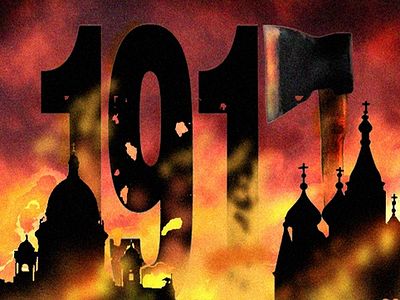 The October Revolution: Prophecies on Russia’s DestinyWhy is this subject so important to us (and we must understand that it is of very serious importance to us) who may have nothing to do with Russians or Russia? Those who have ears to hear, let them hear; and those who have eyes to see, let them see.
The October Revolution: Prophecies on Russia’s DestinyWhy is this subject so important to us (and we must understand that it is of very serious importance to us) who may have nothing to do with Russians or Russia? Those who have ears to hear, let them hear; and those who have eyes to see, let them see.
